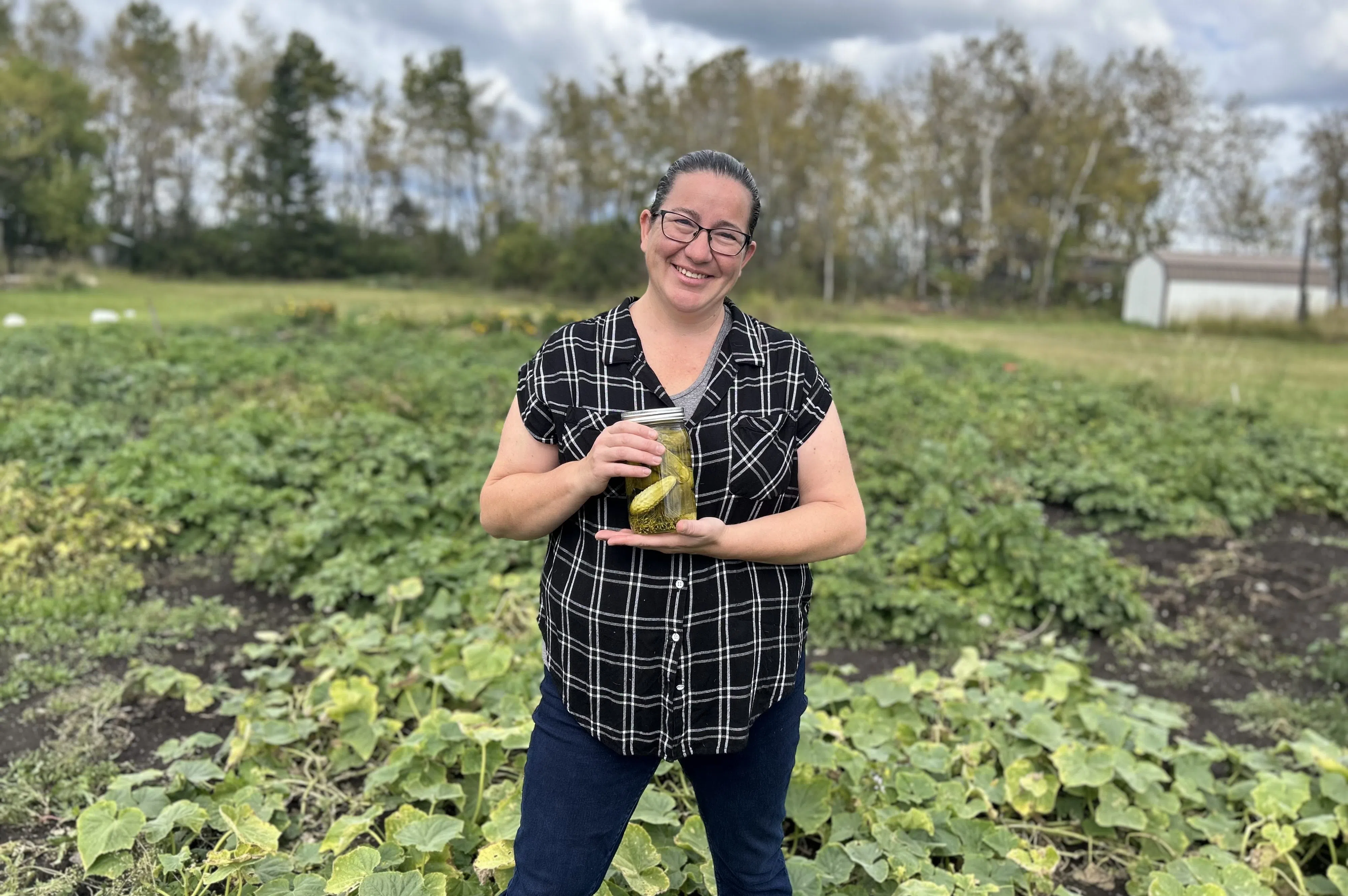
Preserving Family Traditions Through the Art of Pickling
In the crisp embrace of autumn, as the first chills of the season usher in a time of harvest, there’s a familiar sight—people scouring their gardens for the last ripe vegetables. Among them, Anita Smith stands, plucking the final cucumbers from her flourishing garden. This ritual harbors more than just practical considerations; it embodies a rich legacy of culinary preservation that has been passed through generations.
 Anita Smith gathering the last of her cucumbers before frost sets in.
Anita Smith gathering the last of her cucumbers before frost sets in.
As Anita reflects on her journey into the world of canning, she recalls the humble beginnings of her passion: washing jars for her mother. With a fond smile, she admits, “I would tell her, ‘Ugh, I’m never gonna do this when I’m older.’ Now, I wash more jars than my mom ever made me do—by choice!” This transformation from reluctant helper to enthusiastic practitioner underscores the profound connection many have with food traditions, especially in the age of convenience foods.
The Art of Canning: A Family Affair
Every autumn, Anita channels her efforts into preserving hundreds of pounds of garden produce. From green beans and corn, canned using traditional methods with water baths and glass lids, to a wealth of jams and relishes, her preservation skill set is extensive. Yet, her treasured recipe remains her grandmother’s dill pickles, a cherished dish that has become a rite of passage in her family.
“I read this one thing that said it only takes two generations to lose family traditions,” Anita reflects. “Once you skip a generation, it’s very easy for the next generation to skip it too. Then before you know it, it’s lost.”
Anita emphasizes the importance of actively engaging the younger generations in these traditions. By teaching her daughters how to can, she is instilling a sense of responsibility and pride in maintaining their family heritage. The simple act of creating jars filled with pickles becomes a gateway to bonding and nostalgia, uniting past and future.
The Tradition of Pickling: A Rich History
Pickling is not merely a way to preserve food in jars; it is an intricate practice steeped in history. From ancient civilizations that relied on fermentation for sustenance to modern-day enthusiasts eager to keep alive the flavors of the past, pickling stands as a testament to human ingenuity. Each recipe carries a story, a cultural significance, and a deep sense of belonging.
Anita’s personal touch to her grandmother’s recipe is a testament to this evolution. While her grandmother favored larger cucumbers for dill pickles, Anita’s mother added small pickles to the jars, spurring a competitive affection for the “baby pickles” among her siblings. Anita recalls, “When we started canning, we made jars specifically with only baby pickles in them. When we took out a jar, we didn’t have to fight over who got the baby pickle.”
Finding Joy in Labor-Intensive Processes
The labor-intensive nature of canning may deter some, yet for Anita, it is a labor of love. The satisfaction derived from crafting pickles—along with the addictive crunch and the tangy explosion of flavors—makes every moment spent in the kitchen worthwhile. The kitchen transforms into an alchemical space where simple ingredients like cucumbers, vinegar, and spices come together to create timeless indulgences.
 Artfully packed homemade pickles ready for enjoyment.
Artfully packed homemade pickles ready for enjoyment.
Anita reminds us that while convenience foods saturate our grocery aisles, the essence of homemade goods retains a uniqueness that store-bought items cannot replicate. In the end, it is not only about the culinary result but also the stories woven into each jar and the memories created along the way.
Connecting with the Community
Beyond family bonds, Anita’s approach to pickling reflects a broader community ethos—an appreciation for local produce and the importance of sustainability. As more people turn toward home gardens and local farmers’ markets, the return to food preservation methods resonates widely. Individuals can forge connections with their food, understand its origins, and take pride in the skills learned through practice and patience.
Moreover, pickling can even spark communal bonds as neighbors exchange recipes and playfully compete in creating the best preserves. Seasonal events celebrating harvests allow communities to share techniques and the joys of preserving, highlighting the histories behind their recipes and transformations.
A Call to Action: Rediscover Pickling
As you navigate the changing seasons, consider picking up the tradition of pickling in your kitchen. Not only does it offer an opportunity to enjoy the bountiful flavors of fresh produce, but it also keeps alive the narratives of those who practiced it before us. Whether you opt for a robust dill pickle recipe or venture into less common methods like preserving carrot sticks or pickling beets, each method beckons a new adventure in taste and creativity.
This autumn, gather your friends or family for a canning party—a fun and engaging way to share experiences while nourishing your homes with delightful pickled treats. As Anita poignantly states, “The only part of this family tradition that should disappear is the last baby pickle.” Embrace the art of canning as a beautiful dance between tradition and creativity—a celebration of flavors and kinship.
 Gather your supplies and start your preserving adventure!
Gather your supplies and start your preserving adventure!
By immersing yourself in this timeless practice, you not only savor the exquisite taste of your foods but also take part in a tradition that transcends generations, ultimately fostering a deeper appreciation for the art of culinary preservation.












